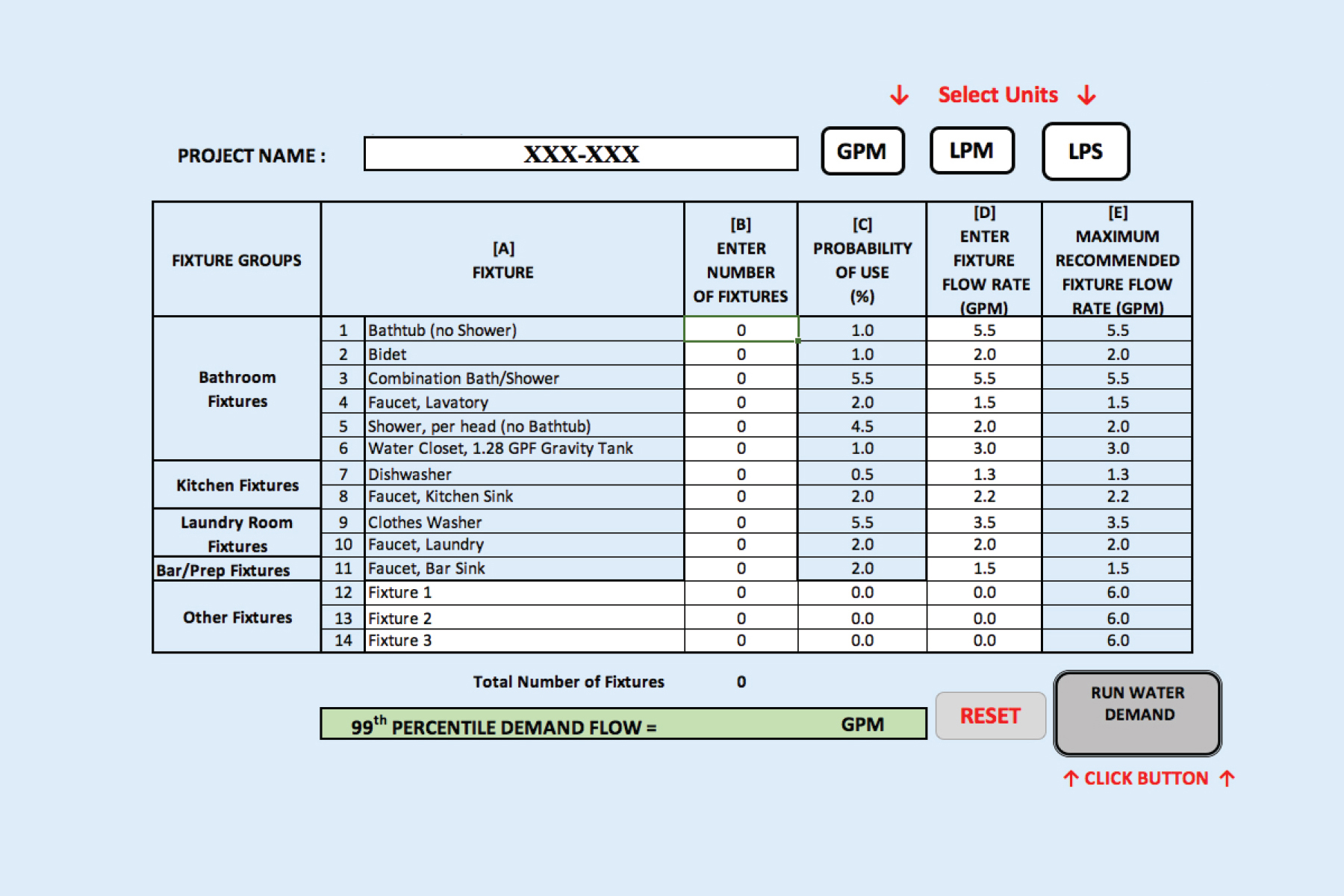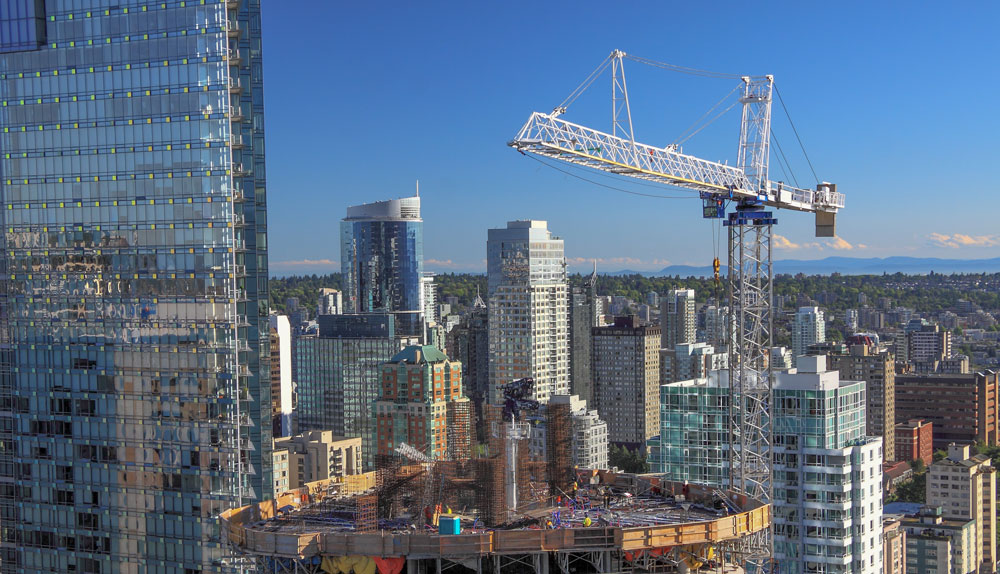BRITISH COLUMBIA MANDATES METHOD FOR RAINWATER REUSE WITH EYE ON REQUIRING FOR POTABLE SYSTEMS IN FUTURE
Starting this spring, contractors and builders in the city of Vancouver, British Columbia, will have the option to use IAPMO’s Water Demand Calculator™ for potable water systems, a money-saving alternative to conventional pipe sizing that will also reduce the amount of stagnant water in pipes.
“You can use conventional pipe sizing or now you can use the Water Demand Calculator, and what I hope is once we get the familiarity and the confidence with that Water Demand Calculator, then in three years, five years, say, we would drop the conventional pipe sizing out and go with the Water Demand Calculator.” The most populous city in the province of British Columbia, Vancouver is no stranger to the Water Demand Calculator, which IAPMO released in 2018 and is now in its second version. Starting in 2019, all rainwater harvesting and reuse systems in the city, regardless of the treatment train being used, must utilize the Water Demand Calculator for pipe sizing.
“Here in the city of Vancouver, we’ve had lots and lots of development,” said Phillip White, manager of Plumbing and Mechanical Inspections. “The city’s getting very dense, and the majority of the city uses a combined sewer system, so we have a lot of combined sewer overflows going into the local waterways.” White said they looked at ways to capture some of the city’s abundant rainfall and reduce the amount of potable water used in toilet flushing, irrigation, and specifically cooling towers, which in the summer months can use up to 50 percent of the potable water demand.
City officials worked with the local health authority to determine requirements for capturing the rainwater and reusing it. White said while some mechanical engineers and installers are familiar with such systems, they have still seen numerous poor designs that called for adding chemicals.
“We really tried to drive the policy to simplicity,” he said, “like instead of having somebody add chlorine or dose the chlorine, we wanted to drive it more UV filter, UV and distribution.”
However, with large pipes going to fixtures that no longer have the demand they once did, they started looking at alternatives to the original Hunter’s Curve.
“Because most of the sites aren’t adding chlorine to the captured rainwater, we don’t want that water sitting in there too long,” he said. “The more we looked around, the more it made sense to adopt the Water Demand Calculator for non-potable systems.”
As a result, he said, there will not be nearly as much stagnant water in the pipes as there would be with conventional sizing.
One project that is utilizing the Water Demand Calculator for pipe sizing is the redevelopment of the Oakridge Centre, which when completed at the end of 2025 will boast the largest non-potable water system in North America. The 28.5-acre project will include 10 residential towers, a community center and park, music venues, a ballet school, office space and an expansion of the existing mall.
The system will supply water for cooling towers, water closets, irrigation, washing machines, and car washes.
White said manufactured purple pipe — denoting recycled water — is being used in the residential suites, which was a key part of the city’s non-potable water system policy.
“The reason we’ve done that is that somebody going into the unit 10 years down the road to add a fixture is definitely going to see that manufactured purple pipe,” he said, adding that it is not necessary for such piping to be used underground in the parking garage because any work done there will be performed by someone familiar with the property.
Vancouver is the only city in the province to have its own plumbing code; the rest of British Columbia — except for some federal lands — is governed by the BC Plumbing Code (BCPC), which is modeled after the National Plumbing Code of Canada. Vancouver has combined those codes into one that is unique to the city and best suits its needs.
“If you look at the non-potable section in our code, it’s about five pages, where the provincial code is five sentences,” he said.

IAPMO’s Water Demand Calculator™ results in an estimated 15-65% reduction in water demand estimates, depending on the size of the residential structure, when compared to current pipe sizing methods.
Find more info online at: https://www.iapmo.org/we-stand/ water-demand-calculator/
Because of the wealth of knowledge city employees possess, Vancouver often serves as an example for smaller jurisdictions to follow, White said, and it’s usually four or five years before measures it adopts are put in the provincial or national code. That’s just fine with them. “We don’t want to do anything here that’s just for the city of Vancouver,” he said. “We want it to get adopted.”
White said many of the mechanical contractors in the city have been asking when they can use the Water Demand Calculator for potable systems because they understand the pipes being installed are significantly oversized. But it’s not just savings on piping, he said; it’s saving on wall space as well because in a city such as Vancouver, every square foot matters.
White gave an example of where before a contractor might run a 4-inch express riser with insulation, that required a 6-inch wall minimum. Now one can run a 2 ½-inch riser with insulation in a 4-inch wall.
“You’re making up some ground, and you’re making up square footage,” he said. “That’s why some mechanical contractors and developers are more than happy to put their data sets in their building so we can start understanding the real-world use of systems rather than the 99th percentile of the Hunter’s Curve.”
White acknowledged, however, that some of the older engineers have been hesitant to follow the Water Demand Calculator’s calculations, but after meeting with them they were able to compromise on one pipe size up from the recommendation while still being far below conventional sizing.
White delivered a presentation on the topic at IAPMO’s 2022 Emerging Water Technology Symposium in San Antonio, where IAPMO Vice President of Technical Services and Research Christoph Lohr introduced him to fellow presenter Gary Klein, an energy efficiency and renewable energy expert who is leading the effort to incorporate hot water as a system into the core principles of building science. Klein’s presentation focused on applying the benefits of the Water Demand Calculator to upcoming projects.
Klein subsequently shared his EWTS presentation in a virtual meeting with about 50 members of Vancouver’s plumbing engineering community, and he said the response was typical to that which he has received throughout North America.

Starting in 2019, all rainwater harvesting and reuse systems in Vancouver, regardless of the treatment train being used, must utilize IAPMO’s Water Demand Calculator for pipe sizing.
“There are always a few questions and a lot of incredulity that there can be that big a difference in peak water demand and pipe sizing when using the Water Demand Calculator. There’s skepticism and relief on both sides of the spectrum,” he said, adding that some attendees will remark they have thought the pipe sizing has been off for a long time and they didn’t know why it had taken so long to address the issue.
Klein said data shows that when comparing peak flow rate predictions from UPC Appendix A and UPC Appendix M (Water Demand Calculator) for hot, cold and total water flow, proportionally the results are about the same.
“It’s useful to know that the measured peak flow rates are significantly lower than either Appendix M or certainly the plumbing code per UPC Appendix A,” he said.
Klein, who is leading an IAPMO working group that is working toward increased adoption of the Water Demand Calculator throughout the United States and Canada, said applicability of the Water Demand Calculator for potable water distribution systems in Vancouver is very high.
“Vancouver is a tall city, so the people in the room are thinking about high-rises because that’s where most of the work is happening,” he said. “Plus there are always going to be low- and mid-rise residential buildings, and it looks very similar all over North America. Canada has similar flow rate restrictions as the United States, so it all fits.”
Contractors and developers will become more comfortable with using the Water Demand Calculator to determine pipe sizing over time as more projects are completed, White said.
“It’s that whole educational piece and they want to see it work,” he said. “It’s not what they traditionally do, but it’s working with industry and trying to steer them toward using the Water Demand Calculator at the end of the day.”

Mike Flenniken
Mike Flenniken is a staff writer, Marketing and Communications, for IAPMO. Prior to joining IAPMO in 2010, Flenniken worked in public relations for a group of Southern California hospitals and as a journalist in writing and editing capacities for various Southern California daily newspapers.
Last modified: May 8, 2024

